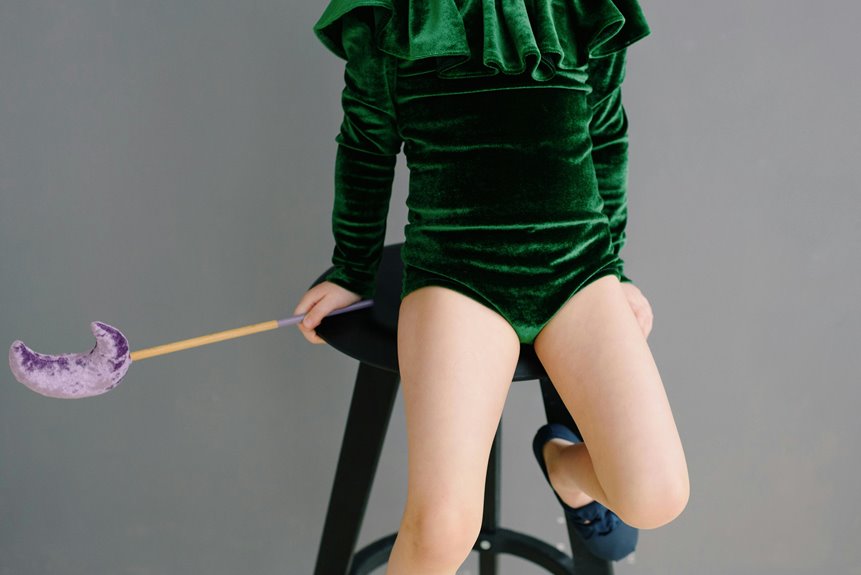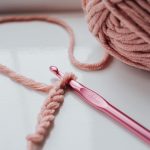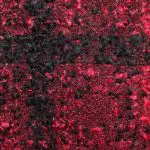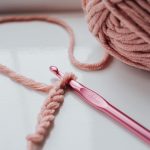Velcro usually won’t stick well to velour fabric because its soft, plush texture and dense fibers make it hard for the hooks to grip securely. The smooth, velvet-like nap creates a barrier that prevents Velcro from forming a strong bond, so it may lose hold quickly. If you still want to use Velcro on velour, there are ways to improve adhesion and alternative fasteners that work better. Keep exploring to find the best options for your velour projects.
Table of Contents
Key Takeaways
- Velcro hooks have difficulty gripping the soft, dense loops of velour fabric, leading to weak attachment.
- The plush nap of velour prevents Velcro hooks from engaging securely with the surface fibers.
- Velcro bonds on velour tend to weaken after a few uses due to the fabric’s smooth texture.
- Using Velcro with a strong adhesive backing and cleaning the velour surface can improve initial adhesion.
- Sewing Velcro edges onto velour and choosing finer hooks helps enhance durability and reduce fabric snagging.
Understanding the Structure of Velour Fabric
Velour fabric combines a soft texture with a unique construction that sets it apart from other materials. When you touch velour, you’ll notice its plush, velvet-like surface created by densely packed, cut fibers that stand upright.
These fibers are woven into a base fabric, usually cotton or polyester, giving velour flexibility and stretch. Unlike smooth fabrics, velour’s pile creates a slight nap, meaning the fibers reflect light differently depending on direction, adding depth and richness to its appearance.
This pile structure also makes velour breathable yet warm, ideal for clothing and upholstery. Understanding this texture helps you appreciate why velour feels luxurious but can be tricky when pairing with fasteners like Velcro, as the soft pile can resist adhesion.
How Velcro Works to Adhere to Surfaces
Although Velcro might seem simple, it relies on a clever design to stick securely to surfaces.
Velcro’s strength lies in its ingenious design, enabling a secure and reusable bond to various surfaces.
You have two components: one side covered in tiny hooks and the other with soft loops. When you press them together, the hooks catch onto the loops, creating a strong bond. This mechanical fastening doesn’t depend on adhesives, so it’s reusable and reliable.
The hooks grab onto fibers or small irregularities on the surface, making the connection firm. You can easily pull the sides apart when you need to, but they stay attached during use.
This design allows Velcro to work well on various materials, as long as the hooks can latch onto something. Understanding this helps you see why Velcro is so versatile and effective.
Compatibility of Velcro With Velour Texture
When you pair Velcro with velour fabric, you’ll notice the hook side struggles to grip the soft, dense loops of the velour. The plush texture of velour creates a barrier that prevents the hooks from catching effectively, reducing the overall holding strength.
Unlike rough or coarse materials, velour’s smooth nap doesn’t provide enough resistance for the Velcro hooks to latch onto securely. You might find that after a few uses, the Velcro loses its grip or causes some flattening of the fabric’s pile.
While Velcro can attach to velour, it won’t perform as reliably as it does on textured or woven fabrics. So, if you decide to use Velcro with velour, expect a weaker bond that may need reinforcement for durability.
Alternative Fastening Options for Velour
If you’ve found that Velcro doesn’t hold well on velour, you’re not out of options. You can try snap buttons, which offer a secure and stylish way to fasten without damaging the fabric.
Magnetic closures work well too, providing an easy-to-use alternative that won’t interfere with velour’s softness. Zippers are another reliable choice, especially for larger items or garments, as they hold firmly and maintain the fabric’s integrity.
Magnetic closures and zippers offer secure, fabric-friendly fastening options that preserve velour’s soft texture and durability.
For a more decorative touch, consider toggles or hook-and-eye fasteners, which combine function with aesthetic appeal.
Each of these alternatives lets you maintain velour’s luxurious look and feel while ensuring your fastening method stays strong and durable. Choose what suits your project best and complements velour’s unique texture.
Tips for Using Velcro on Velour Successfully
Wondering how to make Velcro stick better on velour? Start by choosing Velcro with a strong adhesive backing designed for fabrics.
Clean the velour surface thoroughly to remove dust and oils, ensuring better adhesion. Press the Velcro firmly onto the fabric and let it set for at least 24 hours before use.
If the adhesive alone isn’t enough, sew the Velcro edges onto the velour for extra security. Avoid stretching the velour when applying Velcro, as this can weaken the bond.
Also, consider using hook-and-loop strips with finer hooks to prevent snagging the soft velour fibers. By following these tips, you’ll get a reliable hold without damaging your velour fabric or compromising its softness.
Frequently Asked Questions
Can Velcro Damage Velour Fabric Over Time?
You might notice Velcro can snag or pull velour fabric fibers over time, causing damage. To protect your velour, you should avoid frequent Velcro contact or use gentler fasteners to keep it looking great longer.
Is Velcro Safe to Use on Children’s Velour Clothing?
You might worry Velcro will ruin your child’s velour clothes, but it’s generally safe if you use softer hook sides and avoid frequent rough pulls. This way, you can enjoy easy fastenings without damage.
How Do You Clean Velour With Velcro Attached?
You should close the Velcro before washing to avoid snagging. Wash your velour garment on a gentle cycle with cold water. Avoid bleach and high heat; instead, air dry or tumble dry low to keep both fabrics safe.
Does Humidity Affect Velcro’s Grip on Velour?
Imagine a dance where moisture softens every touch; humidity can weaken Velcro’s grip on velour, making it less clingy. You’ll notice the connection loosens as moisture interferes, so keep things dry to maintain that bond.
Can Velcro Cause Pilling on Velour Fabric?
Yes, Velcro can cause pilling on velour fabric because its hooks catch and pull the delicate fibers. You’ll want to use it sparingly to avoid damaging the soft, plush surface and keep your fabric looking smooth.
- Does 100% Ringspun Cotton Contain Polyester? Clearing Up the Confusion - June 23, 2025
- Understanding Fabric Types: What Is Ringspun Cotton Jersey? - June 23, 2025
- Ringspun Jeans: The Secret to Softer, More Durable Denim - June 23, 2025







